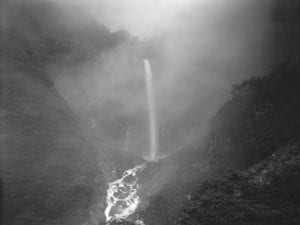Photographer Adel Quraishi’s recent series The Guardians is currently on show at Leighton House Museum, London. Quraishi was commissioned to produce portraits of the eight remaining ‘Guardians’ of the Prophet’s Mosque (Al-Masjid al-Nabawī) by the Governor of Medina. Once numbered in the hundreds, the Guardians date back to the 11th century and are the keepers of the keys to the Prophet Muhammad’s burial chamber. Quaraishi is the only man to have been permitted to photograph these subjects, the last of their generation, with three having since passed away. Rendered on a large scale, it is impossible not to be moved by the connection between viewer and subject when confronted with the works. We speak to Quaraishi.
A: What is it about this ancient custom that interests you?
AQ: Any historical subject presents a great opportunity for a photographer. As a Muslim, these subjects are particularly dear to me. I remember seeing them as a young man and have always been intrigued by them, so the opportunity to photograph them was the chance of a lifetime.
A: How does portrait photography document historical practices differently to other forms of photography?
AQ: Any historical practice involves people, and at the core of history is the human aspect. In my current exhibition at Leighton House Museum, I am exhibiting a photograph of the Prophet’s Mosque’s interior entitled ‘Al Salam O Messenger of Allah’. This photograph gives context to the space in which the Guardians live and work, but ultimately history is determined by people. Everything from the emotions of the subjects through to the lines in their skin tells a story, and that is what I have set out to do.
A: How does representing individual guardians preserve the larger tradition that they are a part of?
AQ: It gives them individualism and emphasises their human side. Few people have the chance to spend time speaking with them and learning from them and I hope to portray the people behind the tradition. This is just one side of the story – the last eight of their generation which once numbered in the hundreds. This is the first time and will be the last that these people are documented in photography.
A: The series is charged with both historical and cultural significance. What responsibility do you think art has to recording such traditions for posterity?
AQ: Both art and historical documentation in their purest form move in straight lines that do not collide. However, in our complex world they cannot avoid each other and constantly meet. When art and history merge, they widen their audience. Two disciplines touch and the longevity is better preserved.
Adel Quraishi, The Guardians, until 29 November, Leighton House Museum, London.
Dicover more at www.rbkc.gov.uk.
Follow us on Twitter @AestheticaMag for the latest news in contemporary art and culture.
Credits
1. Adel Quraishi, The Guardians, Leighton House Museum, 2015 ®Kevin Moran Photography.





